Departure for the Porsche 911 GT3 Break-In Touring – Through the Shimanami Kaido to Shikoku
公開日:2019.06.09
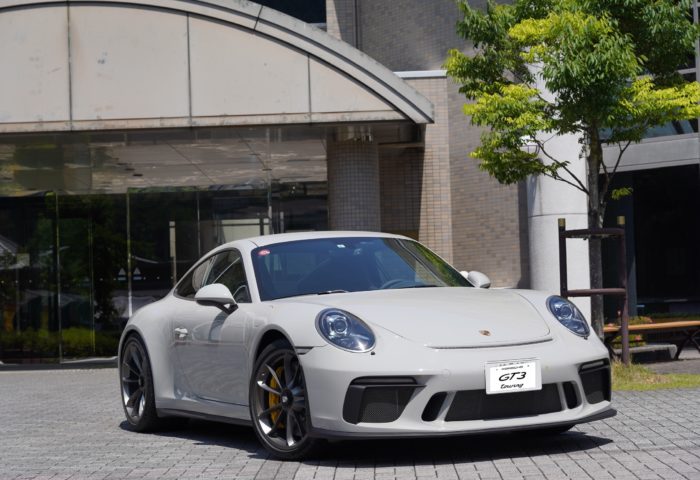
GT3 Touring Break-In Drive
Today, I’m excited to share a report from my husband on the GT3 Touring’s “Shikoku Break-In Touring.” Unlike the recent Tohoku tour report, which focused on the roads we drove, this one centers more on the break-in process and impressions of the GT3. Please enjoy.
Day 1: Setting Off on the Break-In Touring
According to the GT3 owner’s manual (2019 edition), the break-in period requires “both GT3 and GT3 RS to be kept under 1500 km and below 7000 rpm.” This was also the instruction given by the dealer. However, the English 2018 GT3 manual I have on hand states “3000 km and 4000 rpm,” so it seems either the engine specs changed from MY2019 or the break-in policy was updated.
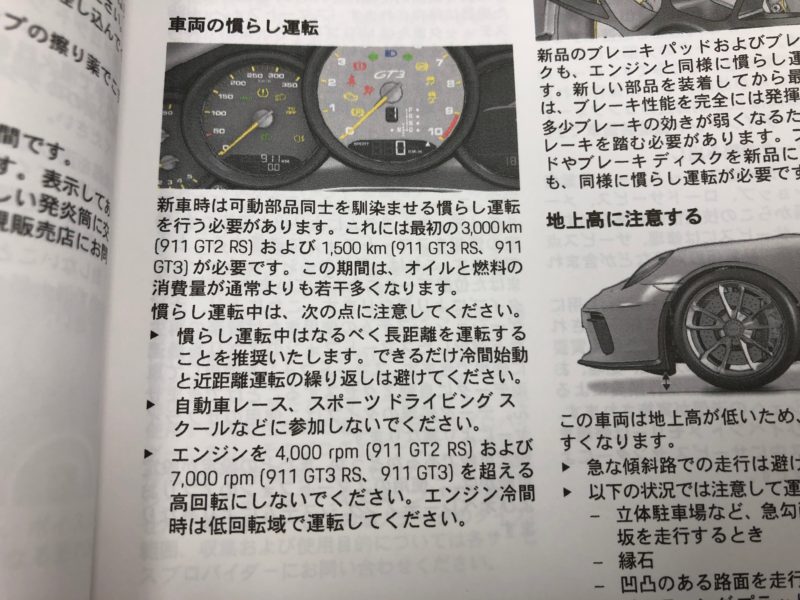
The manual also advises to “cover as much distance as possible during break-in,” so we decided to go touring. Ideally, we’d have gone to Tohoku, but time was short, so this time we headed to Shikoku.
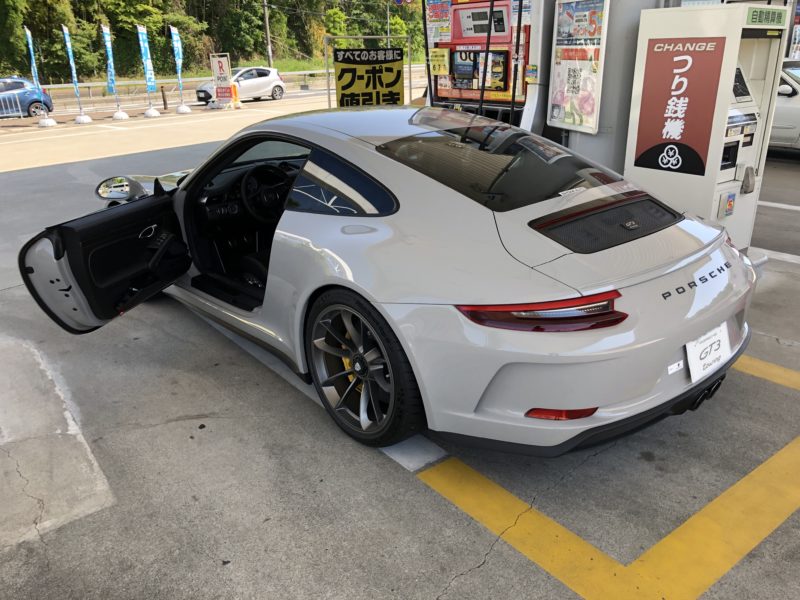
We got on the Sanyo Expressway and cruised the GT3 in 6th gear at 100 km/h, around 2600 rpm. The ride was incredibly smooth and flat, with no hint of a racing car feel. It was quiet enough to hold a normal conversation and listen to music comfortably. (Of course, it’s louder than a regular car.)
Since this was a break-in drive, to avoid drivetrain stress from missed downshifts, we pressed the ‘SPORT’ button to enable auto-blip. Unlike the standard model, pressing ‘SPORT’ on the GT3 does not change engine or suspension settings.
The engine is always in sport mode by default.
So, for the manual GT3, this button only toggles whether auto-blip is active or not. For the PDK version, it’s labeled ‘PDK SPORT’ and changes the shift schedule, and the upcoming Speedster manual will have a clear ‘AUTO BLIP’ label.
Downshifting from 6th to 5th and 4th causes the tach needle to jump, the exhaust flaps to open, and the sound volume to increase dramatically. Revving between 4000 and 5000 rpm delivers an incredible roar. The exhaust note closely resembles that of a GT3 Cup car on the circuit.
While the Boxster GTS is loud, the sound pressure of the GT3 is on a whole different level.
Along the way, we kept the engine below 5000 rpm, feeling out its character as we cruised the Sanyo Expressway. My break-in philosophy is to run the engine moderately under low load. Interestingly, the McLaren manual from my previous car, though a different manufacturer, advises:
“Drive on various roads and at different engine speeds.”
“Avoid running below 2,000 rpm.”
“Avoid prolonged driving at constant speed or load.”
…etc.
So, I planned this route and driving style to expose the GT3 to a variety of conditions. After passing Okayama, we crossed the Shimanami Kaido islands, exploring as we went, before heading to our hotel in Ehime for the night.

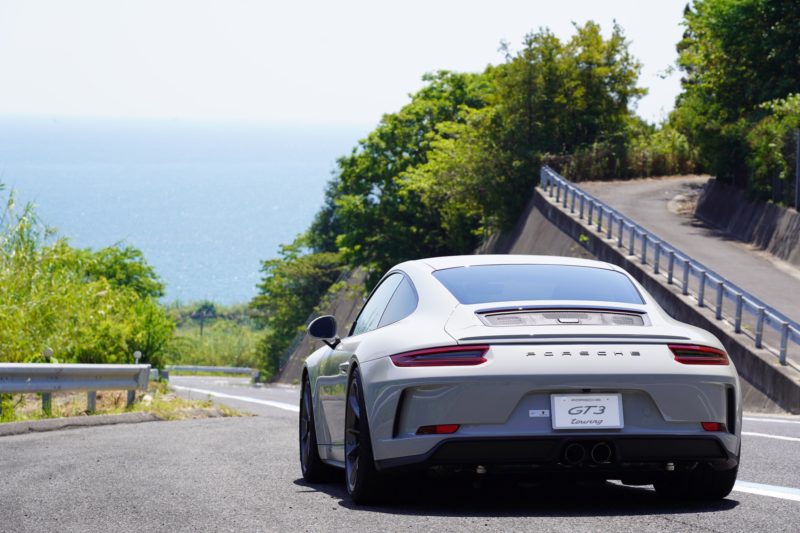
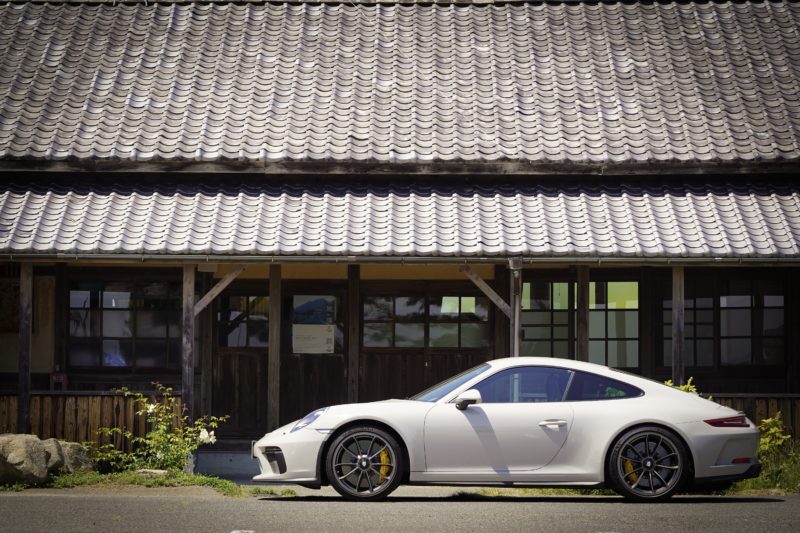
Day 2: From Ehime to Kochi in the GT3
On the morning of day two, the GT3’s odometer had already passed 500 km. We stayed at the Takanoko Hotel, a place I remember well since they once participated in the Porsche Carrera Cup. It’s a regular stop on our Shikoku tours. The hotel entrance displays classic motorcycles like the Honda NR, a treat for bike enthusiasts.
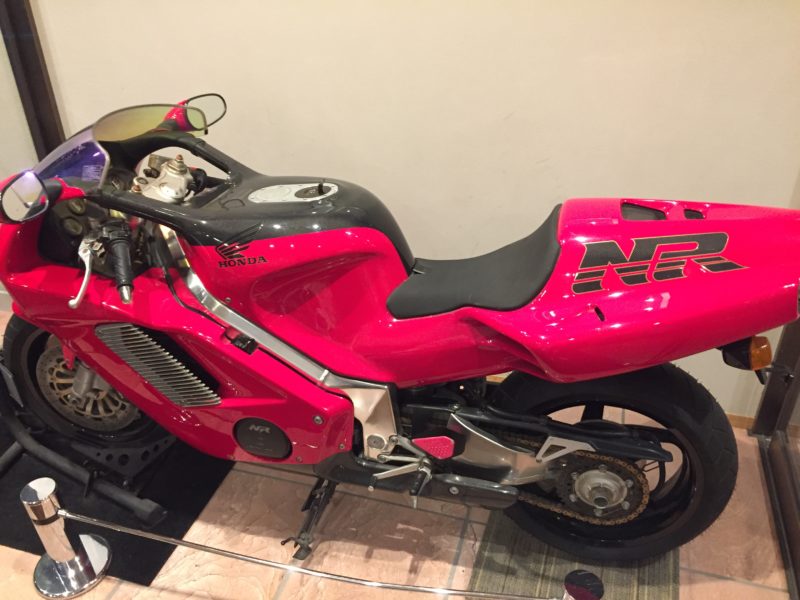
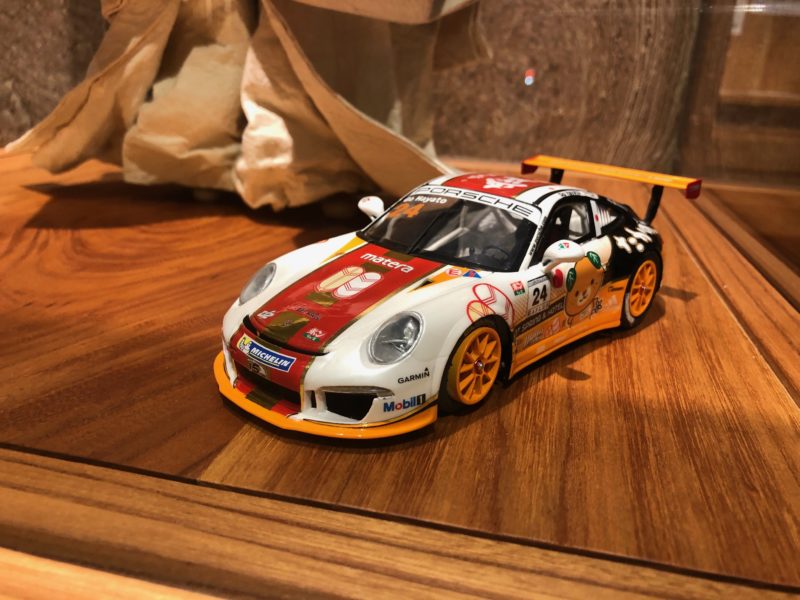
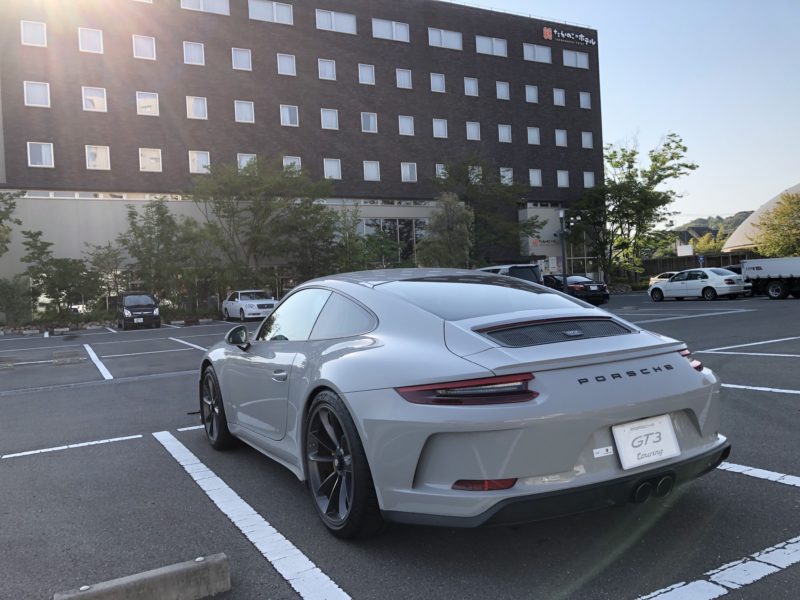
The owner must be a car and bike fan. The parking lot is spacious, with some spots lacking wheel stops, perfect for low cars. If there were a covered Porsche area, I’d definitely pay extra to park there.
The GT3 still wakes up slowly, making various noises until the oil warms up. We slowly left town and headed onto Route 33. Once the oil was warm, we tackled a hill climb at around 4000 rpm. It just turns and turns. The cornering is truly incredible.
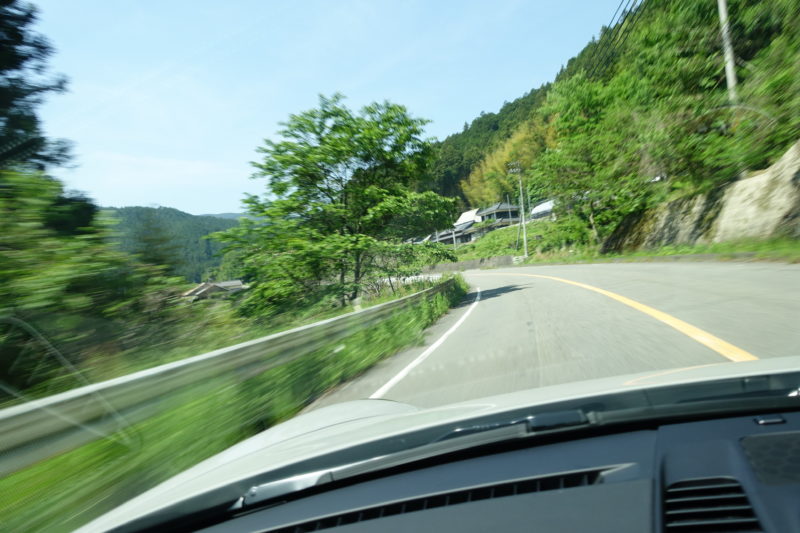
“It’s not the same as the Boxster, not the same at all!”
That’s the feeling as the GT3 pulls you through corners. It’s like the difference between a Zaku and a Gouf (from Gundam) — totally different machines (laughs).
Whether hairpins or high-speed corners, it doesn’t matter. The car turns exactly as you want, with zero slip.
Where is the limit?
I have no idea. The rear axle steering especially makes for amazing agility.
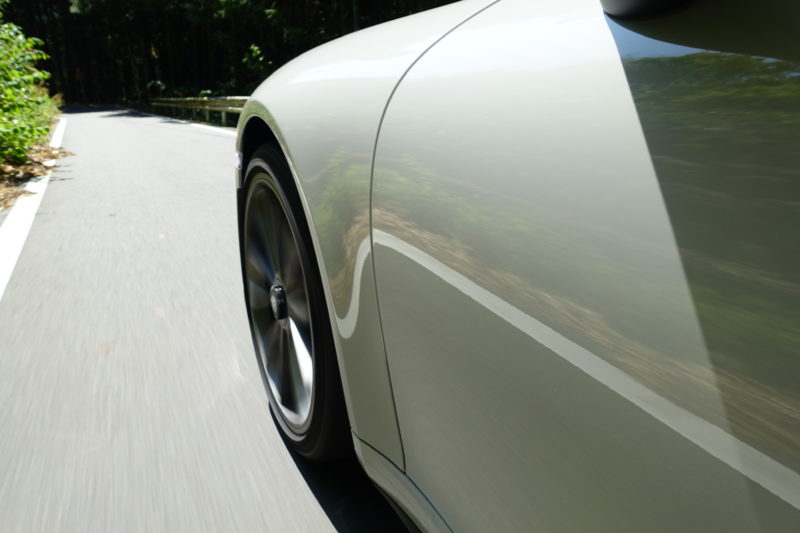
You really have to call the GT3 a “different beast.”
What stood out compared to the Boxster was that the amount and frequency of braking is significantly less in the GT3. I didn’t count exactly, but it felt like 20-30% less. Corners where you’d expect to brake to shift weight or scrub speed in the Boxster, the GT3 just powers through effortlessly.
Plus, there’s no fear or excessive lateral G-force at all, which is surprising. Roll is minimal, yaw builds smoothly—not abruptly—and the car pivots around you. This is quite different from the abrupt lateral G feeling of a Ferrari 488.
It almost makes you wonder, “Is this really a RR?” The air-cooled 964 clearly felt rear-heavy, requiring front weight transfer and torque to corner well, but the GT3 shows none of that RR character on normal roads. It behaves more like a mid-engine car. Anyone can drive it confidently through corners.
At the same time, if you brake properly and apply throttle through the corner as RR theory suggests, it responds beautifully. This car has a deep character that rewards traditional driving techniques.
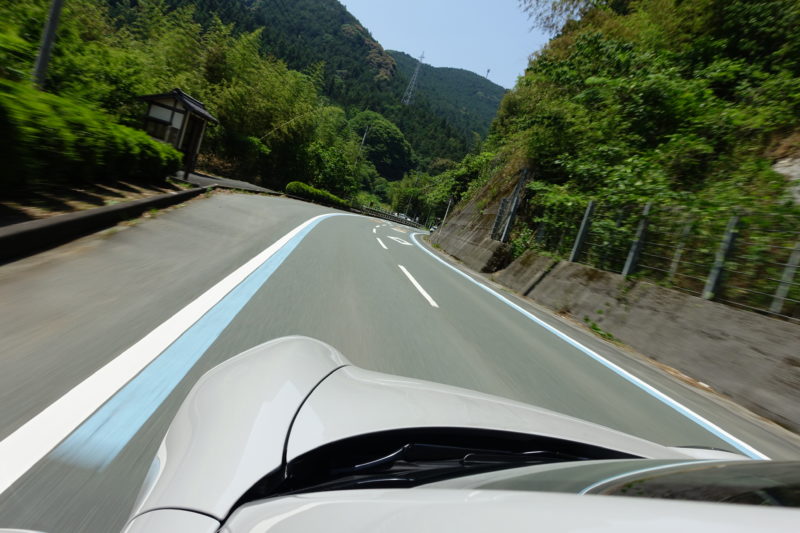
We cruised R197 at a good pace, then took mountain roads to the Shikoku Karst. The gravel and small stones made it hard to pick up speed. The GT3 wears Michelin Pilot Sport Cup 2 tires, which have strong grip, so the stone spray was intense.
What’s worse, the GT3 has minimal sound insulation in the wheel arches, so the sharp popping of stones hitting the car is clearly audible inside.
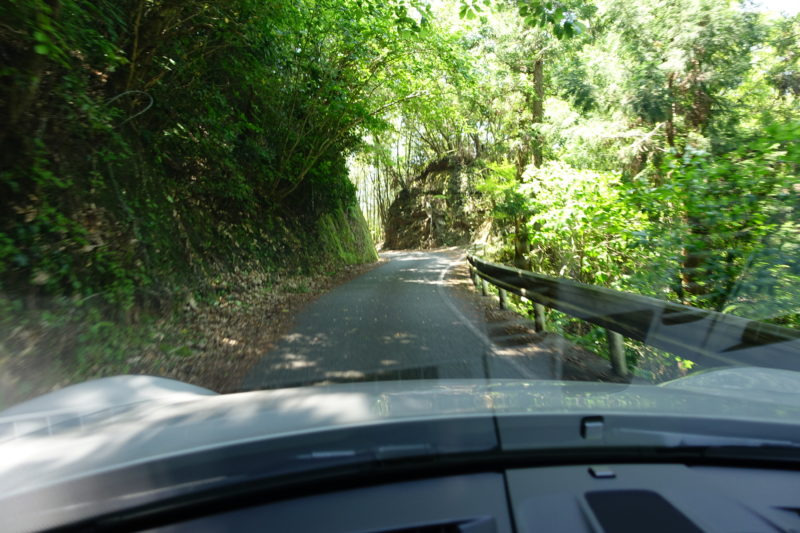
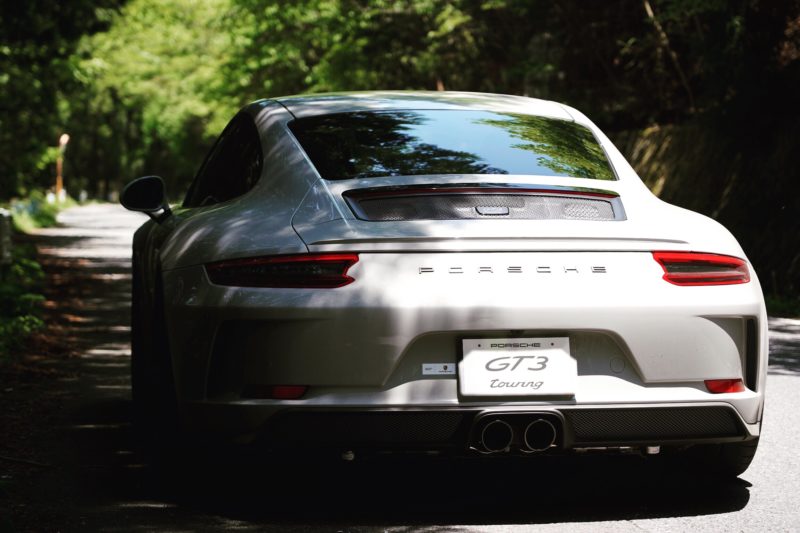
While the Boxster also picks up some noise, the GT3’s is louder, making it hard to want to push hard. Driving “酷道” (narrow, hard-to-drive roads) in the GT3 isn’t very enjoyable.
Thanks to the optional front lift system, we could raise the ride height and manage rough forest roads with bumps. We heard a couple of dull knocks, but no visible damage to the front lip or underbody, so it seems minor.
Now, about the brakes. This GT3 is equipped with the optional PCCB (Porsche Ceramic Composite Brakes). On day one, I didn’t really feel their superior stopping power. Of course, they worked fine, but felt similar to regular Porsche brakes, nothing to wow about.
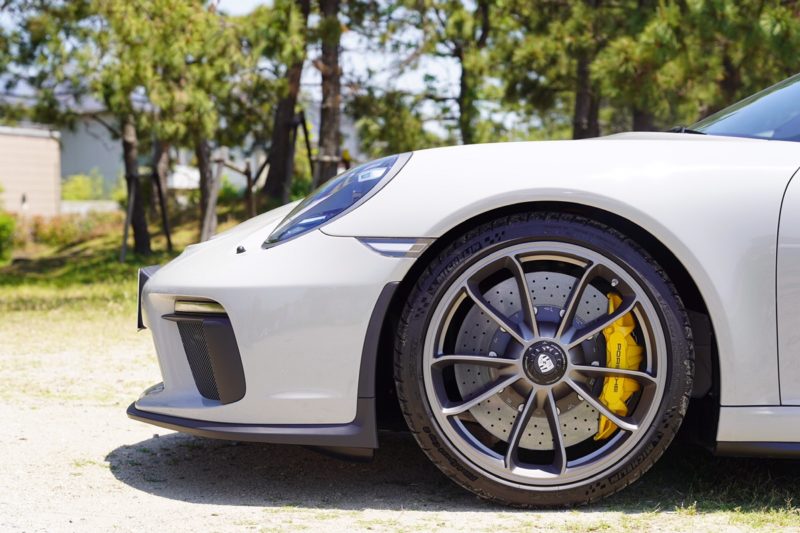
However, as the kilometers added up, the brakes became noticeably stronger, and I thought, “Yes, these really bite now.” Probably the pads bedded in, the discs warmed up, and the brakes finished their break-in.
Later, after returning from the tour and driving the Panamera, I truly appreciated the PCCB’s excellence. The Panamera’s brakes are strong, but the initial pedal feel is very different. It’s not like a Japanese compact car’s abrupt boost-assisted bite; instead, a light touch delivers strong, consistent friction.
Therefore, on normal roads, there’s no need to press hard. Gentle braking lets you precisely control stopping power.
Also, as the manual warns, PCCB brakes tend to squeal more. The air-cooled 964’s brake squeal was notorious, and these are just as loud. Sometimes quiet, but mostly they chirp and whistle when stopping.
I personally think, “Porsche brakes are meant to squeal.” so it doesn’t bother me, but for those who bought the GT3 as a luxury car, it might be a complaint. Also, after kicking up stones, the brakes often make a scraping or squeaking noise while driving. (It disappears after a short while.)
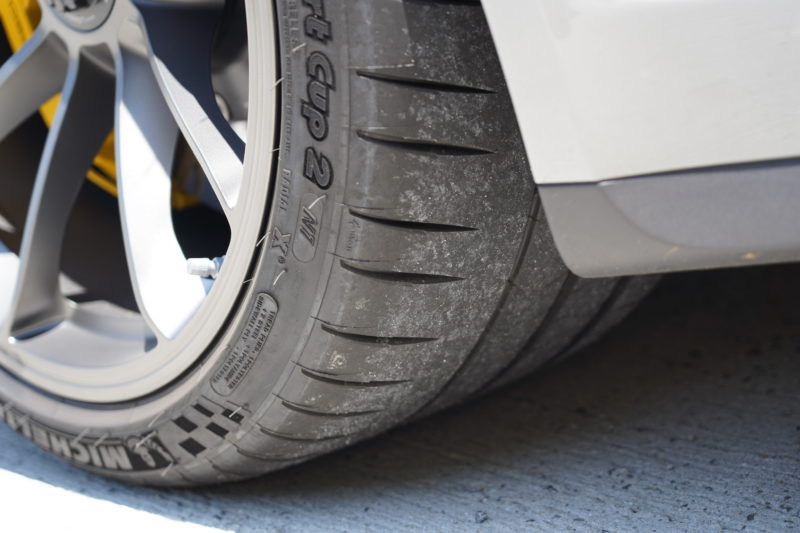
From the Shikoku Karst, we took my favorite Prefectural Route 48 and descended the Shikoku mountains in a spectacular downhill. The GT3 was insanely fast—not just fast, but incredibly stable and confident through every corner.
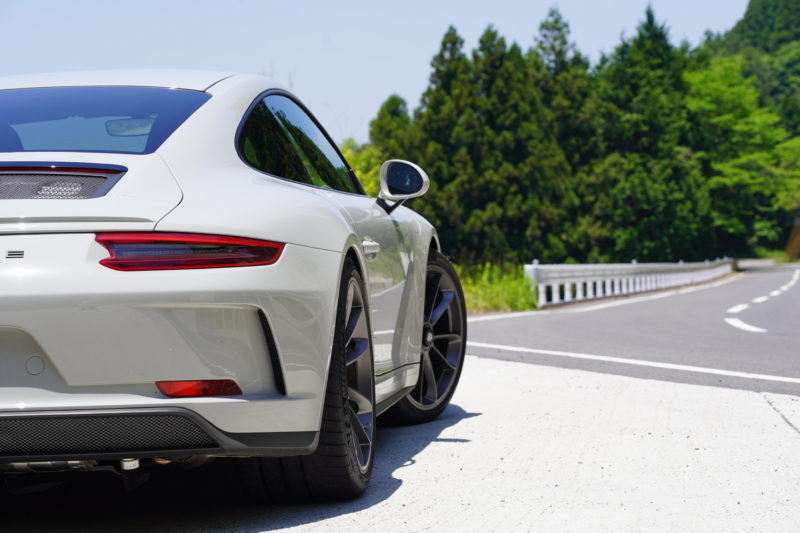
Heading from R197 to Kochi, we entered the Yokonami Kuroshio Line. This winding road has relatively tight corners, and the GT3 cruised through in 3rd and 4th gears. The Boxster would mainly use 2nd and 3rd, but since we were still in break-in and 2nd gear revs the engine too eagerly with too much power, 3rd gear was just right for these low-to-mid speed corners.
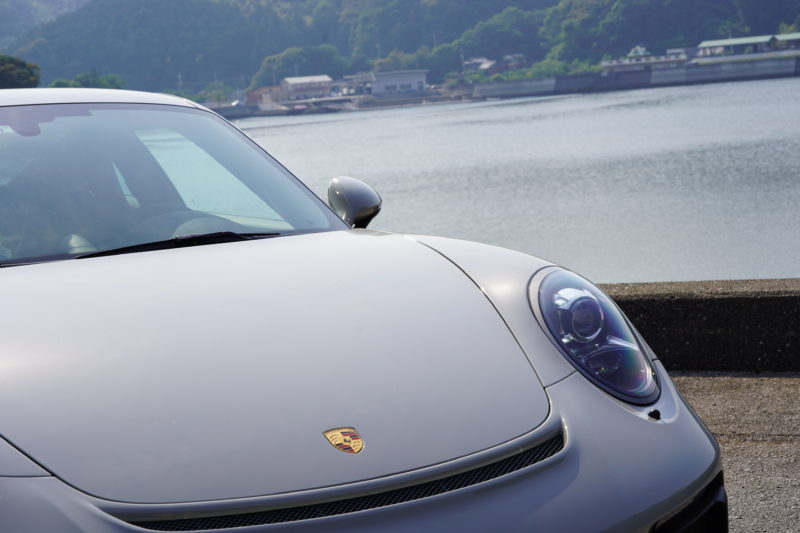

A feature of the 991.2 GT3 manual is that the computer adjusts throttle opening during upshifts, so you don’t need to lift off the accelerator. At first, this takes some getting used to, as you naturally tend to ease off the gas when shifting, but once accustomed, it’s incredibly satisfying.
You keep your foot on the accelerator, disengage the clutch, shift, and re-engage smoothly. If you shift and clutch quickly, you can enjoy seamless acceleration like a PDK. It’s a fantastic blend of manual engagement and PDK smoothness.
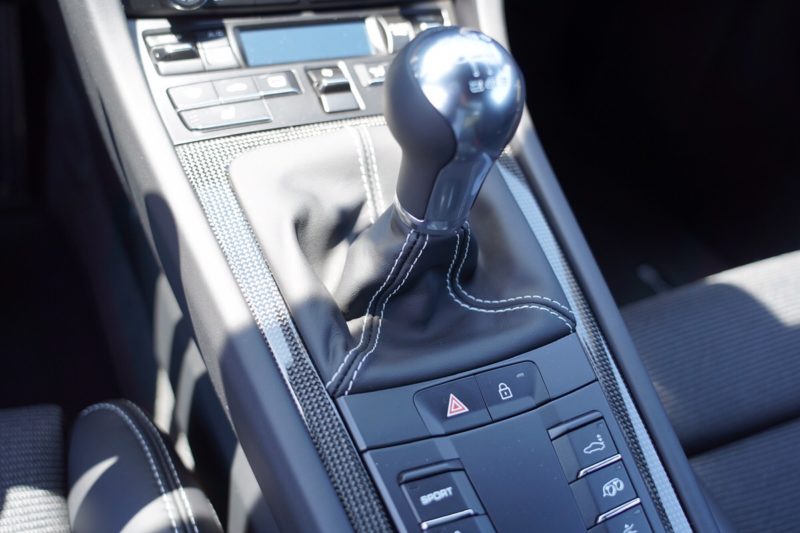
Of course, you can still shift the traditional way by easing off the throttle during upshifts without any issues. In that case, the computer doesn’t intervene, so it won’t bother skilled drivers. Also, this feature works regardless of whether sport mode is on or off. It’s not mentioned in the manual, so many owners might not know about it. If you own a 991.2 GT3 manual and haven’t tried it yet, I highly recommend giving it a go.
Entering Kochi city, we headed to our usual stop, the Southern City Hotel. This hotel has a large parking lot and good rooms and facilities for the price, making it a favorite.
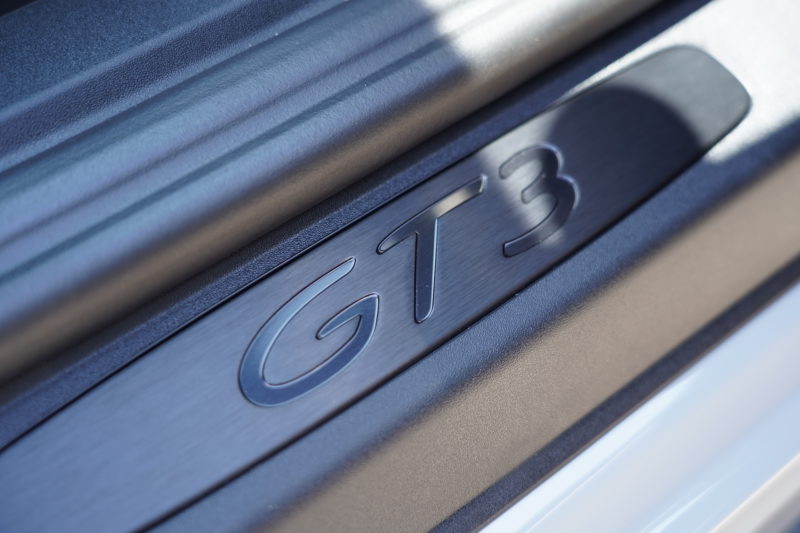
To avoid “tonarā” (parking next to you), I parked the GT3 in a distant spot where no one else was parked, giving off a “Don’t park next to me” aura. And with that, the break-in touring for the day came to an end.
Continue reading → Porsche 911 GT3 Break-In Touring – Kochi to Shikoku Traverse, Break-In Nearing Completion
このブログが気に入ったらフォローしてね!


Comment ( 0 )
Trackbacks are closed.
No comments yet.